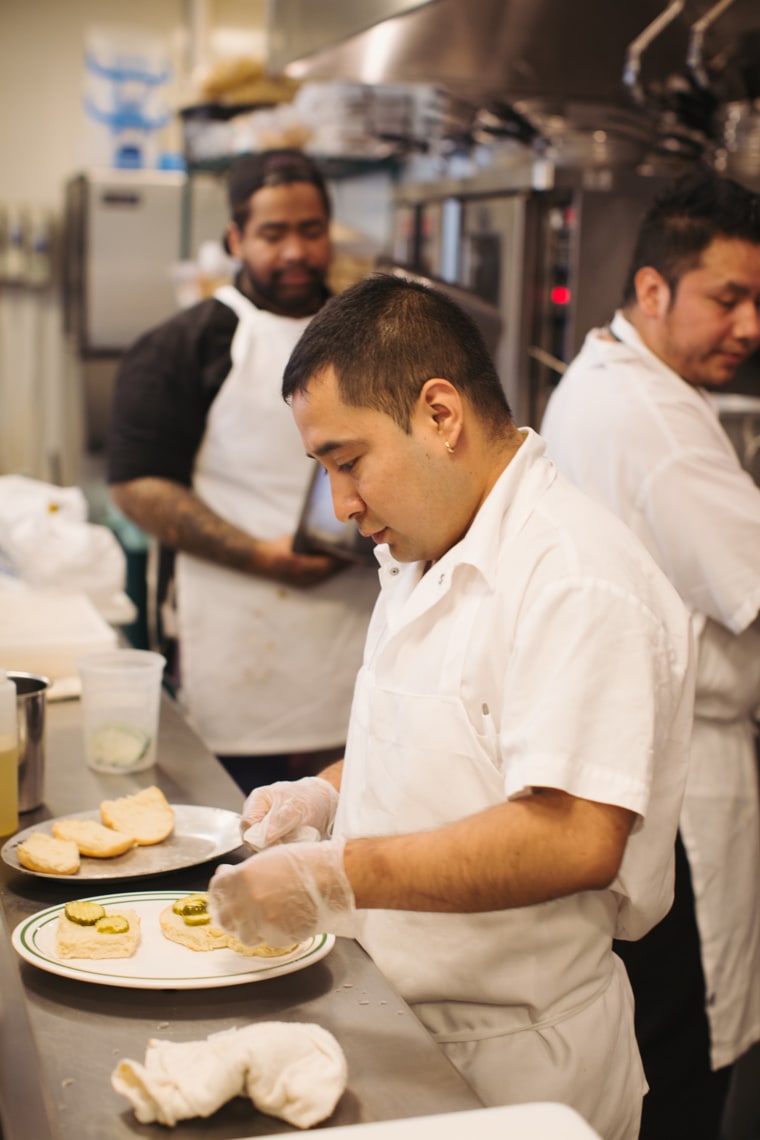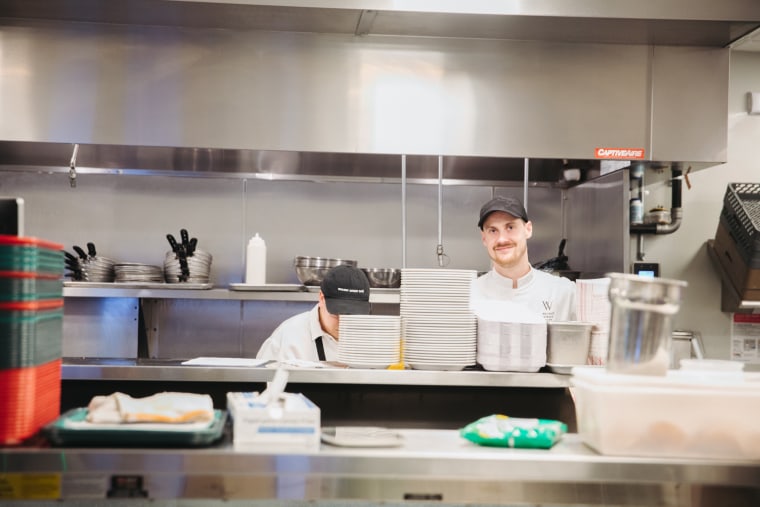Ghost kitchen, dark kitchen, virtual kitchen, cloud kitchen, whatever you call them, they’re popping up everywhere, with estimates placing the number at 1,500 in the United States. And while it only makes sense in a COVID-19 world where at the peak of lockdowns some 90 percent of restaurant meals were taken off-site, “the development of these virtual kitchens was well underway before the pandemic,” said Hudson Riehle, senior vice president of research for the National Restaurant Association. Before the coronavirus, “the industry was talking about points of access versus the word locations,” he said, “because in many ways, location has become somewhat of a dated term.”
What is a ghost kitchen, anyway?
“Its simplest definition is actually a commissary kitchen if you think about it,” said Branden McRill, a restauranteur who owns Fine-Drawn Hospitality, a restaurant group in Philadelphia. A commissary kitchen, he explained, is a place where restaurants or people producing food make their product to distribute or sell at satellite locations.
And even long before we were all relegated to curbside or delivery when indoor dining was shuttered, our crush on convenience was blooming as we made Doordash a verb. The time when the only food you could have delivered was pizza and Chinese became relegated to old sitcoms.
It’s only logical, said Riehle, looking at the evolution of food trucks and catering businesses, that “operators look at the potential to have lower levels of capital investment to take advantage of dramatically different consumer wants and needs as society continues to evolve.”
We may not even realize ourselves just how dramatic the change has been, McRill said. Consumers “don't really understand how the food movement has transitioned out from underneath them. They have changed the way that they eat, and this is not something that's going to shift back, this is something that's going to continue to shift forward.” Restaurant operators are realizing they don’t need a brick and mortar presence, he said. “They can have people order something digitally.”

Ghost kitchens are flexible
And this ability, he said, “allows for an operator who has a single brick and mortar restaurant to take that and convert it into one or several different ghost kitchen concepts.” So the easiest way to get into a restaurant business might be to find somebody with a restaurant that’s closed right now and say, ‘Hey, can I borrow some of your space?’” he said. “You can dip your toe in that way and have access to an area where you can prep and you can get refrigeration and there's going to be cooking equipment.”
Aspiring restaurateurs can rent a space, maybe from former Uber CEO Travis Kalanick and his group or others that are building commissary kitchens around the country, McRill said, for as little as a few hundred dollars a month on a short, flexible lease. Stitch together a website, logo, menu and connection with delivery apps and suddenly they’ve launched a concept with a few thousand dollars. Compare this to the half million dollars it costs to build out a quick service restaurant, he said, a million or two for a brick and mortar, or upwards of two and a half to five million for fine dining.
“You can do this for 10 to 15 grand,” McRill said. More people can get access to that kind of money than the “heavy money” needed for full-blown restaurants — especially critical in the ongoing economic crisis — and what’s more, because you didn’t put a sign up front and spend money designing an interior, responding to the ever-shifting situation is much easier.

“In the ghost kitchen world, you can pivot on a dime,” explained McRill. “Whenever you want to, shut it down, anytime, turn it back on. Pivot, make a slight adjustment, tweak it, push it back out. It's very agile, which is what this moment calls for.”
This agility enabled McRill’s hospitality group to launch three new concepts out of one brick and mortar for just over $20,000 — in 60 days’ time — this summer. They followed this with a trailblazing idea of a virtual food hall, The Commons, where all six of their restaurant concepts operate from two brick and mortar locations. Philly diners can do delivery or takeout from any, and when on-site dining is a thing again, they can order from any of the six. “It was about creating the most flexibility and the most amount of optionality for everyone in a time period when options are critical and everybody's life is constantly shifting moment to moment.”
In the ghost kitchen world, you can pivot on a dime.
Branden McRill
The appeal of this flexibility and the variety of options won’t disappear when the pandemic is behind us, McRill said. Think about how we used to go to the movies, he said, when you had to watch whatever you could get tickets for at the time it was showing, vs the streaming era now, “where people want to get exactly what they want at exactly the time they want it,” he said. People have short attention spans too, he said, and constantly want to try new things. More traditional restaurants will be hard pressed to keep up, he added.

We’re also not likely to abandon our delivery habit, said Riehle. From a consumer’s perspective, “there's nothing more convenient than having a restaurant come to them.” And while we’ll certainly flood restaurants (at least initially) once we are able to again, ghost kitchens and the options they offer aren’t going anywhere, McRill said.
“I really think that this is here to stay in a really big critical way.”

